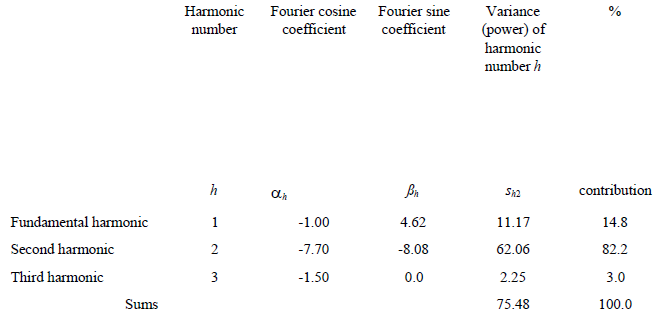
تاريخ الفيزياء

علماء الفيزياء


الفيزياء الكلاسيكية

الميكانيك

الديناميكا الحرارية


الكهربائية والمغناطيسية

الكهربائية

المغناطيسية

الكهرومغناطيسية


علم البصريات

تاريخ علم البصريات

الضوء

مواضيع عامة في علم البصريات

الصوت


الفيزياء الحديثة


النظرية النسبية

النظرية النسبية الخاصة

النظرية النسبية العامة

مواضيع عامة في النظرية النسبية

ميكانيكا الكم

الفيزياء الذرية

الفيزياء الجزيئية


الفيزياء النووية

مواضيع عامة في الفيزياء النووية

النشاط الاشعاعي


فيزياء الحالة الصلبة

الموصلات

أشباه الموصلات

العوازل

مواضيع عامة في الفيزياء الصلبة

فيزياء الجوامد


الليزر

أنواع الليزر

بعض تطبيقات الليزر

مواضيع عامة في الليزر


علم الفلك

تاريخ وعلماء علم الفلك

الثقوب السوداء


المجموعة الشمسية

الشمس

كوكب عطارد

كوكب الزهرة

كوكب الأرض

كوكب المريخ

كوكب المشتري

كوكب زحل

كوكب أورانوس

كوكب نبتون

كوكب بلوتو

القمر

كواكب ومواضيع اخرى

مواضيع عامة في علم الفلك

النجوم

البلازما

الألكترونيات

خواص المادة


الطاقة البديلة

الطاقة الشمسية

مواضيع عامة في الطاقة البديلة

المد والجزر

فيزياء الجسيمات


الفيزياء والعلوم الأخرى

الفيزياء الكيميائية

الفيزياء الرياضية

الفيزياء الحيوية

الفيزياء العامة


مواضيع عامة في الفيزياء

تجارب فيزيائية

مصطلحات وتعاريف فيزيائية

وحدات القياس الفيزيائية

طرائف الفيزياء

مواضيع اخرى
Records of Infinite Period and the Fourier Integral
المؤلف:
Garnett P. Williams
المصدر:
Chaos Theory Tamed
الجزء والصفحة:
108
10-3-2021
2639
Records of Infinite Period and the Fourier Integral
Except for Tables 1 and .2, our examples thus far have dealt with time series (composite waves) that have finite periods. Finite wave periods in fact are the basis of the whole idea of the Fourier series. Unfortunately, real-world datasets in the time domain often don't show finite periods (noticeable periodicity). Consequently, we wouldn't know (on a theoretical basis) whether Fourier analysis could be applied. Mathematicians had to figure out some way around that problem. It turned out that the Fourier-related idea of decomposing any observed record into constituent waves and into a frequency spectrum is still viable. The conceptual solution was to let the period become infinitely long. An "infinitely long period" merely means that the period doesn't repeat itself within the range of the data. That relaxation led to an extension or more general expression of the Fourier series, called the Fourier integral. In practice, people use the Fourier integral instead of the Fourier series (Jenkins & Watts 1968: 24-5).
An integral in general is just the sum obtained by adding together a group of separate elements. A Fourier integral is a mathematical operation that decomposes a time series into sinusoidal components at all frequencies and combines the variances thus obtained into a continuous distribution of variances. To imagine building such a continuous distribution, think of the horizontal spacing between discrete frequencies on a periodogram becoming smaller and smaller. In the limit, frequency spacing becomes infinitesimal. As that happens, wave period (the inverse of frequency) goes to infinity. Also, the distribution of frequencies becomes continuous rather than discrete. When those two events occur—wave period reaching infinity and spacing between successive harmonics or frequencies becoming infinitesimal—the Fourier series turns into an integration of variances over the full range of frequencies. In other words, the Fourier series becomes a Fourier integral. Thus, both the Fourier series and Fourier integral are ways of representing a time series in terms of linear combinations (sums) of sines and cosines. The Fourier series theoretically applies to finite-period time series, whereas the Fourier integral applies to any time series. Hence, the Fourier series is really a special case of the Fourier integral.
Table 1: Hypothetical time-series data.

Table 2: Fourier analysis of data of Table 1.

Using the Fourier integral requires a mathematical equation describing the observed time series. Real-world data can have many patterns or functions. Therefore, many variations of the general Fourier integral are possible. Engineering textbooks tabulate the more common variations, but it's well nigh impossible to write an equation describing many time series (especially for the kind of data I usually seem to get). In such cases, there's no way at all to use the Fourier integral. Another practical disadvantage is that the integral applies to continuous data, whereas chaos can also deal with discrete data. For these reasons, the Fourier integral in its pure form is rarely used in chaos analysis.
In practice, people determine the Fourier coefficients and power spectrum by either of two practical variations of the Fourier integral. One variation or method is the Fourier transform of the autocorrelation function, the other the discrete Fourier transform. (Don't be impressed by the fancy-sounding names.) Both techniques break a time series into a sum of sinusoidal components. Both of them achieve their mutual and singular purpose of transforming time-domain data to a frequency-domain counterpart. The frequency-domain spectrum they produce is continuous rather than discrete. Here's a brief rundown of those two techniques.
 الاكثر قراءة في الميكانيك
الاكثر قراءة في الميكانيك
 اخر الاخبار
اخر الاخبار
اخبار العتبة العباسية المقدسة

الآخبار الصحية















 قسم الشؤون الفكرية يصدر كتاباً يوثق تاريخ السدانة في العتبة العباسية المقدسة
قسم الشؤون الفكرية يصدر كتاباً يوثق تاريخ السدانة في العتبة العباسية المقدسة "المهمة".. إصدار قصصي يوثّق القصص الفائزة في مسابقة فتوى الدفاع المقدسة للقصة القصيرة
"المهمة".. إصدار قصصي يوثّق القصص الفائزة في مسابقة فتوى الدفاع المقدسة للقصة القصيرة (نوافذ).. إصدار أدبي يوثق القصص الفائزة في مسابقة الإمام العسكري (عليه السلام)
(نوافذ).. إصدار أدبي يوثق القصص الفائزة في مسابقة الإمام العسكري (عليه السلام)


















